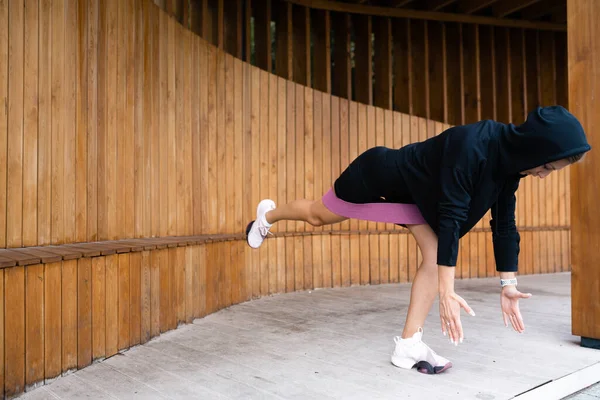Body Weight Training Basics: Building Strength without Equipment
Body weight training, also known as Calisthenics, is a form of exercise that relies solely on your body’s weight for resistance. It’s a versatile and effective way to build strength, improve your flexibility, and increase endurance without the need for specialized equipment or a gym membership.
Here we’ll explore the basics of body weight training, its benefits, and how to get started on your journey to a stronger, fitter you.
The Basics of Body Weight Training
Body weight training involves performing a variety of exercises that use your body’s weight as resistance. These exercises can be customized to suit your fitness level, making them suitable for beginners and advanced athletes alike.
Some common body weight exercises include:
- Push-ups
- Squats
- Lunges
- Planks
- Burpees
- Pull-ups
Just to name a few.
Benefits of Body Weight Training
Accessible:
One of the most significant advantages of body weight training is its accessibility. You can perform these exercises virtually anywhere – at home, in a park, or while traveling. You don’t need access to a gym or expensive equipment, making it an ideal option for those with limited resources.
Cost-Effective:
As mentioned earlier, body weight training requires minimal to no equipment, which means you won’t incur any additional costs. You can start your fitness journey without breaking the bank.

Versatile:
Body weight exercises can be tailored to your fitness level. Whether you’re a beginner or an experienced athlete, there are progressions and variations to challenge you. This versatility ensures that you can continue to make progress and avoid plateaus.
Improved Functional Strength:
Body weight training focuses on compound movements that engage multiple muscle groups simultaneously. This leads to improved functional strength, helping you perform everyday tasks with greater ease and efficiency.
Enhanced Body Control:
Many body weight exercises require balance and coordination, which helps improve your overall body control and stability. This can reduce the risk of injury in daily life.
Scalability:
Body weight training is adaptable to your goals. Whether you want to build muscle, lose weight, or increase flexibility, you can design a workout routine that aligns with your objectives.
Getting Started with Body Weight Training
If you’re new to body weight training, here are some steps to help you get started:
1. Assess Your Fitness Level:
Start by assessing your current fitness level. Be honest with yourself about your strengths and weaknesses. This will help you choose appropriate exercises and set realistic goals.
2. Warm-Up:
Like any workout, it’s essential to warm up before engaging in body weight exercises. A dynamic warm-up routine that includes movements like leg swings, arm circles, and hip rotations will prepare your muscles and joints for activity.

3. Choose Your Exercises:
Select a few basic body weight exercises to begin with. Push-ups, squats, planks, and lunges are excellent options for beginners. As you progress, you can add more challenging exercises to your routine.
4. Focus on Proper Form:
Proper form is crucial for safety and effectiveness. Pay close attention to your form and technique during each exercise. If needed, consult online tutorials or work with a fitness professional to ensure you’re performing exercises correctly.
5. Create a Routine:
Establish a workout routine that includes a mix of strength, cardio, and flexibility exercises. Aim for a well-rounded approach to address different aspects of fitness.
6. Progress Gradually:
As you become more comfortable with body weight exercises, increase the intensity and complexity of your workouts. This can be done by adding more repetitions, increasing the duration of holds, or incorporating advanced variations of exercises.
7. Rest and Recovery:
Allow your body time to rest and recover between workouts. Overtraining can lead to fatigue and increased risk of injury. Adequate rest is essential for muscle recovery and growth.
Sample Body Weight Exercises:

Here are some fundamental bodyweight exercises to incorporate into your routine:
- Push-Ups: Target your chest, shoulders, and triceps.
- Squats: Work your quadriceps, hamstrings, and glutes.
- Lunges: Strengthen your legs while improving balance.
- Planks: Engage your core, shoulders, and back.
- Burpees: Combine cardio and strength training for a full-body workout.
- Pull-Ups/Chin-Ups: Develop upper body strength, particularly in the back and arms.
Let’s Get Going Today…
Body weight training is a highly effective and accessible way to improve strength, flexibility, and endurance.
Whether you’re a fitness novice or a seasoned athlete, incorporating body weight exercises into your routine can help you achieve your fitness goals without the need for expensive equipment or a gym membership. Start with the basics, focus on proper form, and progress at your own pace.
With dedication and consistency, you will be well on your way to building a stronger, fitter, and healthier body through bodyweight training.












More Stories
Reversing Age-Related Heart Damage Through Exercise
Physical Therapy Stretch Bands
Exercises That Can Help Fix Your Posture